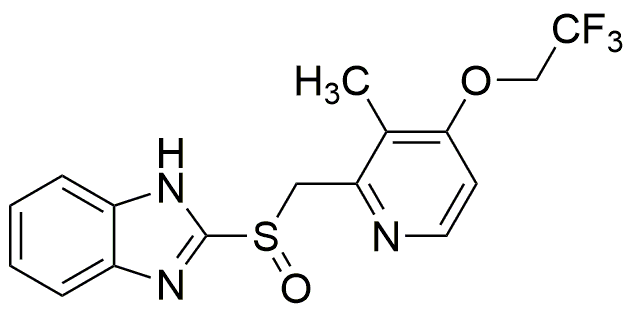Lansoprazole is widely utilized in research focused on:
- Gastrointestinal Health: Commonly used to treat conditions like gastroesophageal reflux disease (GERD) and peptic ulcers, providing relief by reducing stomach acid production.
- Pharmaceutical Development: Employed in the formulation of various medications, allowing for the creation of effective therapies with fewer side effects compared to older acid-reducing agents.
- Clinical Research: Frequently studied in clinical trials to evaluate its efficacy and safety, helping to advance understanding of acid-related disorders and improve treatment protocols.
- Combination Therapies: Often used in conjunction with antibiotics to treat H. pylori infections, enhancing the effectiveness of eradication regimens.
- Veterinary Medicine: Applied in veterinary practices for managing similar gastrointestinal issues in animals, showcasing its versatility across species.
General Information
Properties
Safety and Regulations
Applications
Lansoprazole is widely utilized in research focused on:
- Gastrointestinal Health: Commonly used to treat conditions like gastroesophageal reflux disease (GERD) and peptic ulcers, providing relief by reducing stomach acid production.
- Pharmaceutical Development: Employed in the formulation of various medications, allowing for the creation of effective therapies with fewer side effects compared to older acid-reducing agents.
- Clinical Research: Frequently studied in clinical trials to evaluate its efficacy and safety, helping to advance understanding of acid-related disorders and improve treatment protocols.
- Combination Therapies: Often used in conjunction with antibiotics to treat H. pylori infections, enhancing the effectiveness of eradication regimens.
- Veterinary Medicine: Applied in veterinary practices for managing similar gastrointestinal issues in animals, showcasing its versatility across species.
Documents
Safety Data Sheets (SDS)
The SDS provides comprehensive safety information on handling, storage, and disposal of the product.
Product Specification (PS)
The PS provides a comprehensive breakdown of the product’s properties, including chemical composition, physical state, purity, and storage requirements. It also details acceptable quality ranges and the product's intended applications.
Certificates of Analysis (COA)
Search for Certificates of Analysis (COA) by entering the products Lot Number. Lot and Batch Numbers can be found on a product’s label following the words ‘Lot’ or ‘Batch’.
*Catalog Number
*Lot Number
Certificates Of Origin (COO)
This COO confirms the country where the product was manufactured, and also details the materials and components used in it and whether it is derived from natural, synthetic, or other specific sources. This certificate may be required for customs, trade, and regulatory compliance.
*Catalog Number
*Lot Number
Safety Data Sheets (SDS)
The SDS provides comprehensive safety information on handling, storage, and disposal of the product.
DownloadProduct Specification (PS)
The PS provides a comprehensive breakdown of the product’s properties, including chemical composition, physical state, purity, and storage requirements. It also details acceptable quality ranges and the product's intended applications.
DownloadCertificates of Analysis (COA)
Search for Certificates of Analysis (COA) by entering the products Lot Number. Lot and Batch Numbers can be found on a product’s label following the words ‘Lot’ or ‘Batch’.
*Catalog Number
*Lot Number
Certificates Of Origin (COO)
This COO confirms the country where the product was manufactured, and also details the materials and components used in it and whether it is derived from natural, synthetic, or other specific sources. This certificate may be required for customs, trade, and regulatory compliance.


